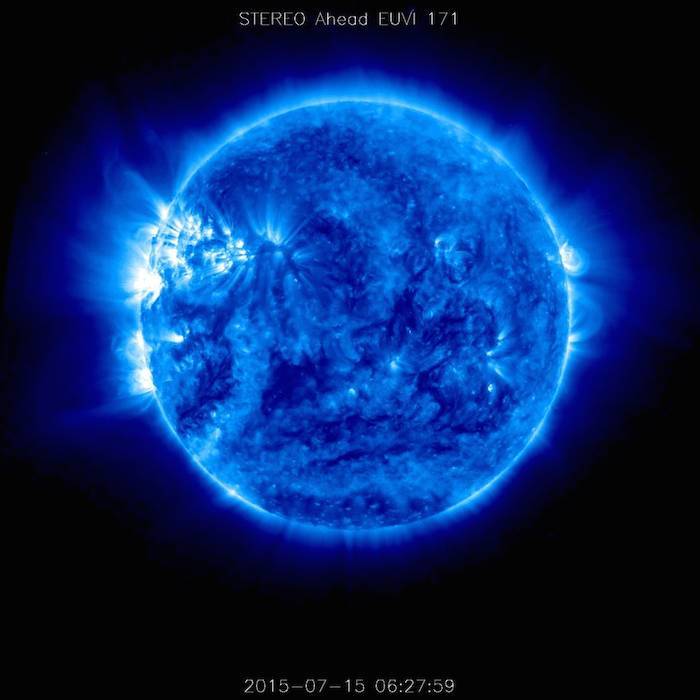.

This image of the sun was taken on July 15, 2015, with the Extreme Ultraviolet Imager onboard NASA's Solar TErrestrial RElations Observatory Ahead (STEREO-A) spacecraft, which collects images in several wavelengths of light that are invisible to the human eye. This image shows the sun in wavelengths of 171 angstroms, which are typically colorized in blue. STEREO-A has been on the far side of the sun since March 24, where it had to operate in safe mode, collecting and saving data from its radio instrument. The first images in over three months were received from STEREO-A on July 11.
The three-month safe mode period was necessary because of the geometry between Earth, the sun, and STEREO-A. STEREO-A orbits the sun as Earth does, but in a slightly smaller and faster orbit. The orbit ensured that over the course of years, Earth and the spacecraft got out of sync, with STEREO-A ending up on the other side of the sun from Earth, where it could show us views of our star that we couldn’t see from home. Though the sun only physically blocked STEREO-A from Earth’s line of sight for a few days, STEREO-A was close enough to the sun—from our perspective -- that from March 24 until July 8, the sun interfered with STEREO-A’s data transmission signal, making it impossible to interpret.
As STEREO-A kept orbiting, it eventually made its way far enough from the sun to come out of this transmission dark zone. In late June, the STEREO-A team began receiving status updates from the spacecraft, confirming that it had made it through its long safe-mode journey unharmed.
STEREO is the third mission in NASA's Solar Terrestrial Probes program (STP). The mission, launched in October 2006, has provided a unique and revolutionary view of the sun-Earth system. The two nearly identical observatories - one ahead of Earth in its orbit, the other trailing behind - have traced the flow of energy and matter from the sun to Earth.
Quelle: NASA/STEREO
4336 Views
